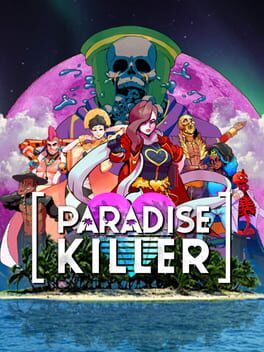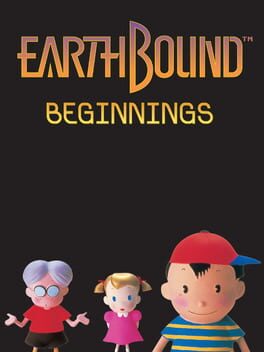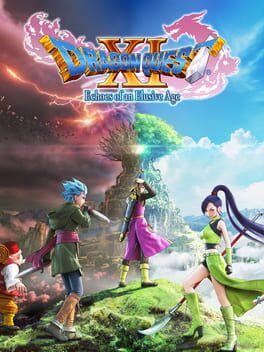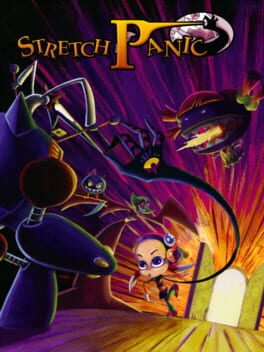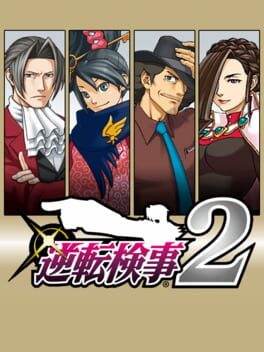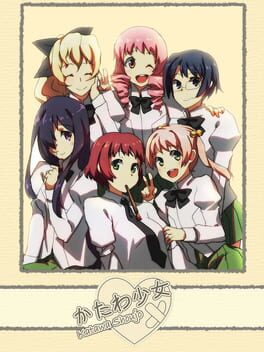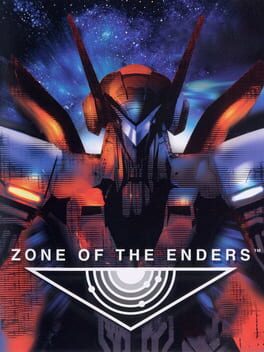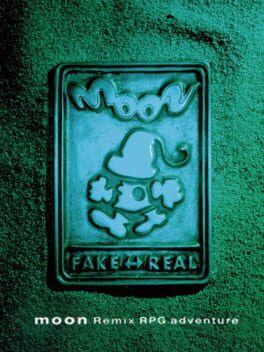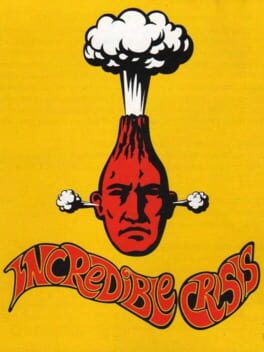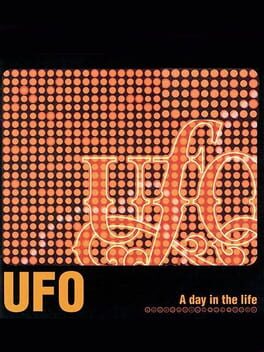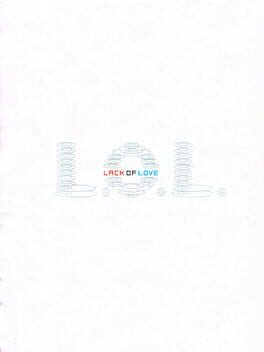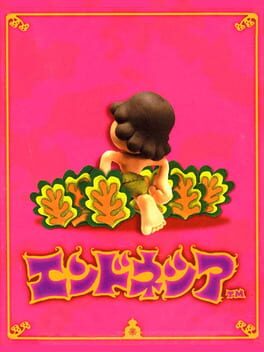Gio
15 reviews liked by Gio
The best parts are when the main character feels bad for just going out because her mother has been waiting all night. Being a really small thing, it nails that the guilt is not so much on how the mother really feels, but on the girl’s perceptions on how she always thought she ought to be (as expected, it turns out that it is not that much of a deal, although the game is also too bland presenting the conflict of views and needs between mother and daughter).
Getting that out of the way, the game lacks passion. The same passion that makes the girl want to change her life to be who she really is, that makes her fall in love, that makes her take risks. I even activated the “erotic” scenes out of curiosity (because I’m a pervert) and I’m pretty sure I can easily find Teletubbies clips with more blood in their veins than any sexual encounter here, let alone any kiss or any hug. And this is not only my complaint about the relationship not working but about the exploration of oneself necessities and desires not working, about the state (and problems) of living in Hong Kong in 1986 being whatever and at the end getting out with a bland, supposedly liberating, romance that is too shy to say anything out loud as much as it wants to.
Getting that out of the way, the game lacks passion. The same passion that makes the girl want to change her life to be who she really is, that makes her fall in love, that makes her take risks. I even activated the “erotic” scenes out of curiosity (because I’m a pervert) and I’m pretty sure I can easily find Teletubbies clips with more blood in their veins than any sexual encounter here, let alone any kiss or any hug. And this is not only my complaint about the relationship not working but about the exploration of oneself necessities and desires not working, about the state (and problems) of living in Hong Kong in 1986 being whatever and at the end getting out with a bland, supposedly liberating, romance that is too shy to say anything out loud as much as it wants to.
Dark Souls 3 is the series at its most melancholic. It's a game that — despite being almost surprisingly fair for a Souls game — seems to hate both its players and itself. It's ugly and brutal in a way that would seem gratuitous, if not for the air of deep sadness that pervades every inch of its world. And behind its murky narrative veil of cycles and kingdoms and ages of fire and dark hides a game about artistic stagnation — about how art that lingers too long will find only collapse and self-subsumation. "There is nothing left in this world," it seems to say. "Go and find another." Paint one, even. With humanity as a guide.
Paradise Killer
2020
“[Paradise Killer] might really be just style over substance, but goddamn, that’s some well-considered, obstinate style.” -me, like a year ago.
Looking back, this sentiment was misguided. If I were to go back and edit this line (which I can, but I won’t), I’d instead ask if Paradise Killer’s substance is capable of transcending its, as I put it, well-considered, obstinate style. It was and still is clear that PK is speaking to some capital-C Classic themes: it is not the first nor will it be the last piece of media I take in where the ruling class is depicted as megalomaniacal deities. The unfathomably massive scale of its worldbuilding plays on our incapability to perceive relatively-colossal things accurately. The cosmos! An infinitely stretching timeline! How big is a universe? Unfortunately, too big for us. I guess it's appropriate, then (warning: it’s been a while since I’ve played the game) that the drabble of each individual component ring less clear in my head than the totality of the island, exposing both the positives and negatives of the bigger picture.
To put it simply, PK spends a lot of its time and efforts building upon this tapestry of infinites, and in the process bypasses too often an opportunity to speak to the present. At the intersection of the Yakuza-like dedication to worldly verisimilitude and unhinged sci-fi setting lies Paradise Killer, though with less of a handle on the intimate moments that makes its very clear inspirations great works. I think this is why my original stance a year back felt so unsure - for as incredible as some of the collectible descriptions can be at depicting this world, how much of what is said there can be extracted and applied? Does this game have that totality it is shooting for, or is it a museum disguised as a game with lots and lots of platforming?
Of course, all this time spent brainstorming does result in something. The 24th island itself pulls its end of the weight, depicting slaughterings of citizens (a fee of sorts for the island sequences, which the leaders are routinely fucking up!) against vaporwave backdrops, all but implying an inseparable bond that routine and atrocity hold. The islands are made in the image of the Syndicate, and end up speaking volumes to their values, their taste (or lack thereof), and self-perceptions. Better than the actual texts of the game even.
Alongside that original statement, I also said that the game sticks its landing in the final hour - and I still do think that! What ends up tilting the scale away from the gauzy theme-safari that PK risks being is the trial itself, a moment where the game decides: yep, give them the gun and let them destroy it all. I ended up playing it as straight as I could, but you can really just forgo all evidence and ice your fellow immortals for no reason if you should desire. And given the omnipotent Judge’s purpose, I think that’s probably the more favorite outcome? Because, at the end of it all, getting the issue out of here and letting the process continue is the ultimate desire for the world. Stopping the gears to repair them risks having to look at them, bring their purpose to the forefront of your mind and, worst of all, question them. We can’t have that, can we?
I might be a little flat on Paradise Killer now that I realize that these massive proper nouns and LCD screen-isms all boil down to some pretty simple, well-trodden themes, but the things that sing within PK do so from talented mouths (I didn’t mention it, but that vocal song is like 5-star goated status, god fucking damn). Given that Kaizen have teased working with the likes of Ikumi Nakamura, the developers have a lot to look forward to and, by extension, so do I.
Looking back, this sentiment was misguided. If I were to go back and edit this line (which I can, but I won’t), I’d instead ask if Paradise Killer’s substance is capable of transcending its, as I put it, well-considered, obstinate style. It was and still is clear that PK is speaking to some capital-C Classic themes: it is not the first nor will it be the last piece of media I take in where the ruling class is depicted as megalomaniacal deities. The unfathomably massive scale of its worldbuilding plays on our incapability to perceive relatively-colossal things accurately. The cosmos! An infinitely stretching timeline! How big is a universe? Unfortunately, too big for us. I guess it's appropriate, then (warning: it’s been a while since I’ve played the game) that the drabble of each individual component ring less clear in my head than the totality of the island, exposing both the positives and negatives of the bigger picture.
To put it simply, PK spends a lot of its time and efforts building upon this tapestry of infinites, and in the process bypasses too often an opportunity to speak to the present. At the intersection of the Yakuza-like dedication to worldly verisimilitude and unhinged sci-fi setting lies Paradise Killer, though with less of a handle on the intimate moments that makes its very clear inspirations great works. I think this is why my original stance a year back felt so unsure - for as incredible as some of the collectible descriptions can be at depicting this world, how much of what is said there can be extracted and applied? Does this game have that totality it is shooting for, or is it a museum disguised as a game with lots and lots of platforming?
Of course, all this time spent brainstorming does result in something. The 24th island itself pulls its end of the weight, depicting slaughterings of citizens (a fee of sorts for the island sequences, which the leaders are routinely fucking up!) against vaporwave backdrops, all but implying an inseparable bond that routine and atrocity hold. The islands are made in the image of the Syndicate, and end up speaking volumes to their values, their taste (or lack thereof), and self-perceptions. Better than the actual texts of the game even.
Alongside that original statement, I also said that the game sticks its landing in the final hour - and I still do think that! What ends up tilting the scale away from the gauzy theme-safari that PK risks being is the trial itself, a moment where the game decides: yep, give them the gun and let them destroy it all. I ended up playing it as straight as I could, but you can really just forgo all evidence and ice your fellow immortals for no reason if you should desire. And given the omnipotent Judge’s purpose, I think that’s probably the more favorite outcome? Because, at the end of it all, getting the issue out of here and letting the process continue is the ultimate desire for the world. Stopping the gears to repair them risks having to look at them, bring their purpose to the forefront of your mind and, worst of all, question them. We can’t have that, can we?
I might be a little flat on Paradise Killer now that I realize that these massive proper nouns and LCD screen-isms all boil down to some pretty simple, well-trodden themes, but the things that sing within PK do so from talented mouths (I didn’t mention it, but that vocal song is like 5-star goated status, god fucking damn). Given that Kaizen have teased working with the likes of Ikumi Nakamura, the developers have a lot to look forward to and, by extension, so do I.
Playing this game again when I was a game design student and learning how to program made me realize how artful every small aspect of this game is; its journey, its dialogue, the battles, the world design, and graphics, everything just clicks in favor of a singular vision and message.
While I couldn't appreciate it until years after I loved its sequel, the prequel still managed to be a formative experience for me.
I love that magicant becomes a place you visit multiple times as a home world in the pink clouds of fantasy creatures, cloud swimming cats, and just strange people, living beneath a sad queen. The armor shops in this place have multiple tiers and variations of equipment that can be useful all game, and the tons of stuff in the treasury in the queens castle combined with the limited inventory makes it so you have incentive to come back and return to this place, to relax from the real world of physical objects and people that might want to harm you while you search for the eight things that will sing you a portion of a melody to save the world.
I won't forget the dance sequence, the singing cactus, driving a tank, taking the train across the world and through the most dangerous tunnel, running from giant creatures and machines in the endgame, teaming up with a gangster that became bedridden from injury he took by helping me, having to deal with asthma, catching a cold from an npc, the list goes on.
This game might live in the shadow of its superior sequel, but it's a totally different and fantastic experience on its own, despite sharing a lot of similar flavors and ideas.
Also, after playing other rpg's from this era, the crit SMAAASH system in this game adds so much needed unpredictability to battles that it keeps them from getting stale. You can always crit an enemy for a ton of damage, or they can crit you and you have to make do with the turn-around. Having to deal with unexpected situations are what rpg's are all about.
While I couldn't appreciate it until years after I loved its sequel, the prequel still managed to be a formative experience for me.
I love that magicant becomes a place you visit multiple times as a home world in the pink clouds of fantasy creatures, cloud swimming cats, and just strange people, living beneath a sad queen. The armor shops in this place have multiple tiers and variations of equipment that can be useful all game, and the tons of stuff in the treasury in the queens castle combined with the limited inventory makes it so you have incentive to come back and return to this place, to relax from the real world of physical objects and people that might want to harm you while you search for the eight things that will sing you a portion of a melody to save the world.
I won't forget the dance sequence, the singing cactus, driving a tank, taking the train across the world and through the most dangerous tunnel, running from giant creatures and machines in the endgame, teaming up with a gangster that became bedridden from injury he took by helping me, having to deal with asthma, catching a cold from an npc, the list goes on.
This game might live in the shadow of its superior sequel, but it's a totally different and fantastic experience on its own, despite sharing a lot of similar flavors and ideas.
Also, after playing other rpg's from this era, the crit SMAAASH system in this game adds so much needed unpredictability to battles that it keeps them from getting stale. You can always crit an enemy for a ton of damage, or they can crit you and you have to make do with the turn-around. Having to deal with unexpected situations are what rpg's are all about.
This is gonna be just an analysis of differences I noticed between the original version and S versions, and how I feel they actually effect the experience of the game.
I now own 3 different versions of this game (vanilla PS4, S Switch, and S PS4). I played a bit of it in 2018 before leaving it shelved to finish other games in the series before returning to it. I did the same thing with the switch version when it came out, but I felt something was fundamentally different about the experience of playing it on Switch, so I had decided to finish my file on PS4 before returning to the extra stuff on Switch. Now that the S version is on PS4, it makes everything a lot more complicated.
Anyway, here is some of the magic of the original vanilla version I felt that you won't find on either S version:
Dynamic lighting on nearly every light source, as well as global dynamic lighting: It seems like every light, bright spot, and torch can cast large and even strong shadows, which was really surprising to me at how real and tangible it made the environments feel. The ladder in starting village to the right of the entrance will cast a large shadow from the torch near that moves quickly and angularly away from it as you go up it, stretching it across the length of the cave. As well as the sun causing flares with the camera, the stone surfaces picking up specular lighting in the houses. I'm not usually one to prioritize graphics, but DQ environments are so memorable, minimal, and striking that I think it really added to the atmosphere of all the locations I remember. I'm led to believe that the mentioned ladder in that starting village was placed there in order to show off lighting capability with the dynamic shadow casting.
Foliage and foliage motion: Grass is thicker and lusher in vanilla, and it sways much more to the simulated wind effects. Some people have complained about this actually because it tends to come off strangely on higher resolutions. I liked it though.
The Midi effect: The use of synthesized tracks over symphonic tracks was controversial in 2018, but I think it allowed for a really interesting effect. Here you had the highest fidelity Dragon Quest and possibly JRPG, presented in the most cinematic fashion possible regarding event choreography , blocking, and lighting, and the heart of the picture, the sound, was playing harsh, boisterous, synthetic music in a way that some found irritating but I thought was pretty confident in expressing a core theme: that at the end of the day, all the dressing, nuance, lighting, modeling, and fidelity on display here is still an extension of the simplest possible stuff; the same stuff that began in the 80s, and I mean that mechanically, artistically, conceptually. I haven't finished the game yet, but it's like even after 30 years, games are all based on the same foundations: actions, roles, and mechanics working together in a system to convey a feeling, and even in 200 years that won't change, and the ability to convey a really affecting story through a game can still be based on the simplest possible techniques-given grandiosity, weight, gesture, context, and theme.
I think the switch version loses that subtle feeling completely because the intense "fidelity-ness" of it is lost, so the music doesn't have anything to be a contrast with. Instead, with the S version, you have a 2D mode running parallel to the chapters of the 3D mode, conveying the same kind of idea in an alternate mode, rather than taking advantage of modern technical specs. I think the PS4 S version comes closer to that feeling when combining the sharpened 3D with the synthesized track, but like I said, with the loss of foliage motion and dynamic lighting, it's not all there yet.
A nice parallel to that effect is the combination of 2D mode with the symphonic soundtrack, highlighting instead the emotional power capable even in scenes made of the simplest ingredients, sprites, menus, text, and X and Y movement. The fidelity of the soundtrack adds a layer to those old but never out-of-date techniques and styles.
There are some things to mention about the updated S version on PS4: the lighting change to baked lighting although creating a more uniform look to environments, allows for some more color and less over-blooming in certain spots. The new models reflect less light than before, and the effect in the original version where character's skins will literally glow in the sunlight is gone (it always looked plasticy and unnatural to me), some surfaces and areas have actually been updated from vanilla to look better overall, and the new draconian options are nice. I think adding randomness to NPC interactions is a really good place for Dragon Quest to do more Dragon quest-type stuff. I think Dragon quest has always been about re-exploring the familiar in order to transform it once again to the unfamiliar, making you see something you think is standard as if it's your first time all over again. Seeing NPC's lie to me or my characters fumble in awkwardness through what should be routine overworld conversations was really unexpected and hilarious, and added a dynamic aspect to an otherwise overlooked motion of speaking to even the most basic of characters. I think it also adds some of the charm and humor I felt was somewhat missing from NPCs of the original version.
The one thing I do miss though is first person mode. I just really liked going around and sometimes just standing still to gawk at the environment design or the warm people doing their thing. The photo mode just doesn't cut the same feeling for me. Not sure why they removed it or didn't restore it on the PS4 version of S.
All that said and done, I'm probably gonna switch over to the S version on PS4 and finish it there. I was gonna play both versions, but when hearing about how long this game actually is, and given how much I really like the extra draconian NPC interaction based modes, as well as all the other extra story content, I'll play the S version through to the end, and probably keep the switch version as an airplane 2D mode game.
I now own 3 different versions of this game (vanilla PS4, S Switch, and S PS4). I played a bit of it in 2018 before leaving it shelved to finish other games in the series before returning to it. I did the same thing with the switch version when it came out, but I felt something was fundamentally different about the experience of playing it on Switch, so I had decided to finish my file on PS4 before returning to the extra stuff on Switch. Now that the S version is on PS4, it makes everything a lot more complicated.
Anyway, here is some of the magic of the original vanilla version I felt that you won't find on either S version:
Dynamic lighting on nearly every light source, as well as global dynamic lighting: It seems like every light, bright spot, and torch can cast large and even strong shadows, which was really surprising to me at how real and tangible it made the environments feel. The ladder in starting village to the right of the entrance will cast a large shadow from the torch near that moves quickly and angularly away from it as you go up it, stretching it across the length of the cave. As well as the sun causing flares with the camera, the stone surfaces picking up specular lighting in the houses. I'm not usually one to prioritize graphics, but DQ environments are so memorable, minimal, and striking that I think it really added to the atmosphere of all the locations I remember. I'm led to believe that the mentioned ladder in that starting village was placed there in order to show off lighting capability with the dynamic shadow casting.
Foliage and foliage motion: Grass is thicker and lusher in vanilla, and it sways much more to the simulated wind effects. Some people have complained about this actually because it tends to come off strangely on higher resolutions. I liked it though.
The Midi effect: The use of synthesized tracks over symphonic tracks was controversial in 2018, but I think it allowed for a really interesting effect. Here you had the highest fidelity Dragon Quest and possibly JRPG, presented in the most cinematic fashion possible regarding event choreography , blocking, and lighting, and the heart of the picture, the sound, was playing harsh, boisterous, synthetic music in a way that some found irritating but I thought was pretty confident in expressing a core theme: that at the end of the day, all the dressing, nuance, lighting, modeling, and fidelity on display here is still an extension of the simplest possible stuff; the same stuff that began in the 80s, and I mean that mechanically, artistically, conceptually. I haven't finished the game yet, but it's like even after 30 years, games are all based on the same foundations: actions, roles, and mechanics working together in a system to convey a feeling, and even in 200 years that won't change, and the ability to convey a really affecting story through a game can still be based on the simplest possible techniques-given grandiosity, weight, gesture, context, and theme.
I think the switch version loses that subtle feeling completely because the intense "fidelity-ness" of it is lost, so the music doesn't have anything to be a contrast with. Instead, with the S version, you have a 2D mode running parallel to the chapters of the 3D mode, conveying the same kind of idea in an alternate mode, rather than taking advantage of modern technical specs. I think the PS4 S version comes closer to that feeling when combining the sharpened 3D with the synthesized track, but like I said, with the loss of foliage motion and dynamic lighting, it's not all there yet.
A nice parallel to that effect is the combination of 2D mode with the symphonic soundtrack, highlighting instead the emotional power capable even in scenes made of the simplest ingredients, sprites, menus, text, and X and Y movement. The fidelity of the soundtrack adds a layer to those old but never out-of-date techniques and styles.
There are some things to mention about the updated S version on PS4: the lighting change to baked lighting although creating a more uniform look to environments, allows for some more color and less over-blooming in certain spots. The new models reflect less light than before, and the effect in the original version where character's skins will literally glow in the sunlight is gone (it always looked plasticy and unnatural to me), some surfaces and areas have actually been updated from vanilla to look better overall, and the new draconian options are nice. I think adding randomness to NPC interactions is a really good place for Dragon Quest to do more Dragon quest-type stuff. I think Dragon quest has always been about re-exploring the familiar in order to transform it once again to the unfamiliar, making you see something you think is standard as if it's your first time all over again. Seeing NPC's lie to me or my characters fumble in awkwardness through what should be routine overworld conversations was really unexpected and hilarious, and added a dynamic aspect to an otherwise overlooked motion of speaking to even the most basic of characters. I think it also adds some of the charm and humor I felt was somewhat missing from NPCs of the original version.
The one thing I do miss though is first person mode. I just really liked going around and sometimes just standing still to gawk at the environment design or the warm people doing their thing. The photo mode just doesn't cut the same feeling for me. Not sure why they removed it or didn't restore it on the PS4 version of S.
All that said and done, I'm probably gonna switch over to the S version on PS4 and finish it there. I was gonna play both versions, but when hearing about how long this game actually is, and given how much I really like the extra draconian NPC interaction based modes, as well as all the other extra story content, I'll play the S version through to the end, and probably keep the switch version as an airplane 2D mode game.
A very short (about 1 hour and 20 minutes in length) low budget linear detective visual novel directed by Taisuke Kanasaki who is better known for directing Hotel Dusk and Another Code/Trace Memory, both games which I had a good time going through. A story about an arson case being reopened under the tip of an unknown caller being a possible murder and investigated by two misfits of the detective agency. Nanase is the stone cold grizzled detective while his partner Amekura is the lively youngster, pretty much the usual suspects you'll see in any law enforcement show. While seemingly cliche, they are written well enough to have engaging conversations with each other to keep you entertained.
Gameplay wise you can tell there was not much of a budget to work with (explains the $5 price tag) as the entire game takes place in either the interrogation room or your office. When you're not listening to Nanase and Amekura banter you're interrogating possible suspects in a Phoenix Wright sort of way. At times you'll have to present a statement and if it's wrong you'll lose some health. The answers are always really easy and nothing that'll make you think hard. It leaves much to be desired but what carries the game is the story. In such a sort length the plot flows as good as it can and keeps you wanting more as you learn about how everything transpired. For fans of Hotel Dusk you'll feel right at home with the sort of dialogue and music throughout the game (Same Composer too). There is only about 6 tracks in the game and none of them get overplayed to an extent and are memorable tunes especially the one that plays at the reveal of the killer.
Sadly what really holds the game back besides the lack of areas and interactivity is how much it tries to set up a continuation. There's a lot of things that the game doesn't explain such as Nanase's supposedly deeper involvement in the case. This game feels like its a pilot episode of a detective show. It ends abruptly on a huge cliff hanger that would've set up an entire full release game. From the looks of it that'll never happen as this was Kanasaki's last game as of 2016. Nowadays he doesn't seem to be involved in anything outside of this art for Guilty Gear Strive he did a couple months ago https://preview.redd.it/hwghm2addv171.jpg?width=841&format=pjpg&auto=webp&s=753bc9ecf43d920a76725c84d9bbe808c781e95f
I do wish these characters and story line could continue in some form in the future.
Gameplay wise you can tell there was not much of a budget to work with (explains the $5 price tag) as the entire game takes place in either the interrogation room or your office. When you're not listening to Nanase and Amekura banter you're interrogating possible suspects in a Phoenix Wright sort of way. At times you'll have to present a statement and if it's wrong you'll lose some health. The answers are always really easy and nothing that'll make you think hard. It leaves much to be desired but what carries the game is the story. In such a sort length the plot flows as good as it can and keeps you wanting more as you learn about how everything transpired. For fans of Hotel Dusk you'll feel right at home with the sort of dialogue and music throughout the game (Same Composer too). There is only about 6 tracks in the game and none of them get overplayed to an extent and are memorable tunes especially the one that plays at the reveal of the killer.
Sadly what really holds the game back besides the lack of areas and interactivity is how much it tries to set up a continuation. There's a lot of things that the game doesn't explain such as Nanase's supposedly deeper involvement in the case. This game feels like its a pilot episode of a detective show. It ends abruptly on a huge cliff hanger that would've set up an entire full release game. From the looks of it that'll never happen as this was Kanasaki's last game as of 2016. Nowadays he doesn't seem to be involved in anything outside of this art for Guilty Gear Strive he did a couple months ago https://preview.redd.it/hwghm2addv171.jpg?width=841&format=pjpg&auto=webp&s=753bc9ecf43d920a76725c84d9bbe808c781e95f
I do wish these characters and story line could continue in some form in the future.
Stretch Panic
2001
I mean, I wasn't expecting the Alien Soldier of boob pinching, but this is the only time I've ever played a Treasure game that seemed ideas-first, execution-second. Granted, there are some great ideas! A few bosses land their inventiveness perfectly fine and the presentation of everything is vibrant and clever (besides the EX levels, which kind of suck and are the albatross around this game's otherwise perfect structure).
Cynically, I can't help but think of this game as a canary in the coalmine for Treasure, though; while they made several great games after this (the very next one was Ikaruga), Stretch Panic feels emblematic of a specific decline - that pushing a console to its limits and firing on all cylinders was becoming less viable as a developer calling card. It makes immediate sense that they found a home in the portable consoles, where they were allowed by the standards of the day to continue refining their craft.
I dunno, maybe that's attaching a lot of weight onto a game that at times feels like it's moonlighting as a tech demo, but it's hard not to get in my feelings a little when I play a Treasure game I hadn't before and it disappoints. They're a finite resource these days, so you gotta spread them out! Speaking of which, I hope you're all looking forward to my Sin and Punishment: Star Successor review 20 years from now.
Cynically, I can't help but think of this game as a canary in the coalmine for Treasure, though; while they made several great games after this (the very next one was Ikaruga), Stretch Panic feels emblematic of a specific decline - that pushing a console to its limits and firing on all cylinders was becoming less viable as a developer calling card. It makes immediate sense that they found a home in the portable consoles, where they were allowed by the standards of the day to continue refining their craft.
I dunno, maybe that's attaching a lot of weight onto a game that at times feels like it's moonlighting as a tech demo, but it's hard not to get in my feelings a little when I play a Treasure game I hadn't before and it disappoints. They're a finite resource these days, so you gotta spread them out! Speaking of which, I hope you're all looking forward to my Sin and Punishment: Star Successor review 20 years from now.
Somewhat of a weaker title, fraught with redundant writing, an interrogation system which fails to be interesting (except in case five, because, of course), and lots and lots of black-and-white flashbacks of things 99% of viewers will already remember. Additionally, there were moments in the game in which a character would do a "testimony-contradiction-present" schtick, when it felt like all the character was doing was providing exposition (this happened once in the trilogy, but it happens more than once here). Ace Attorney Investigation 2's Testimonies have a very strange difficulty: they were either completely free or completely stumped me. Was the rest of the series like this...? I don't remember. Certainly wasn't this extreme. The logic system, in which you must connect two facts together to deduce a new fact, was also strange toward the end, in how you had to connect facts which didn't seem to connect at all. The spritework also is a bit of a step back from Apollo Justice's, but they're certainly serviceable. Good, even. I'm not convinced a universal 3/4 angle worked better than AA's intimate front-views, but, it works for what it is. As usual, the fifth case brings everything together and wraps up the entire story in a neat little bow, which is why it's a 3 instead of a 2.5. What Investigations 2 does really well is its continuous story, in which all five cases relate to each other!... even though it doesn't become clear how until later. Some character arcs are also pretty great. Not all of them... but a certain boy. Try not to spoil yourself on this game, or the case you got spoiled on might seem mind-numbingly boring! But if you're being roped along for the ride, it's a decent ride.
Katawa Shoujo
2012
must things be "good?" is it not enough to have consumed it during a weirdly vulnerable and foundational time in one's youth and promptly have it set a precedent for what one seeks out in other works of fiction going forward?
i'm not sure if katawa shoujo is entirely worth reading in this day and age; it is in almost every way a product of its time and place. its popularity was most likely spurned by a bunch of young dudes from /v/ expecting a funny little game with crass humor and walking away from it having genuinely felt something from a piece of media from the first time. again, time and place — in today's era of brutal honesty about commitment to fiction and fandoms wearing their investment in their favorite stories proudly on their sleeves, it may seem quaint at best and downright questionable at worst. but back in 2012 when the abstract concept of "feels" was all a lot of people really had to describe what this game and many other period-piece jp media had done to them, it was something truly special.
in many ways, it still is — at least to me. rin was my first favorite-ever character and probably my first hint that i was autistic was how much i related to her route at the tender age of 14. it set a precedent going forward for my investment in character writing above all else in fiction, and i really can't imagine where i would be without it.
i'm not sure if katawa shoujo is entirely worth reading in this day and age; it is in almost every way a product of its time and place. its popularity was most likely spurned by a bunch of young dudes from /v/ expecting a funny little game with crass humor and walking away from it having genuinely felt something from a piece of media from the first time. again, time and place — in today's era of brutal honesty about commitment to fiction and fandoms wearing their investment in their favorite stories proudly on their sleeves, it may seem quaint at best and downright questionable at worst. but back in 2012 when the abstract concept of "feels" was all a lot of people really had to describe what this game and many other period-piece jp media had done to them, it was something truly special.
in many ways, it still is — at least to me. rin was my first favorite-ever character and probably my first hint that i was autistic was how much i related to her route at the tender age of 14. it set a precedent going forward for my investment in character writing above all else in fiction, and i really can't imagine where i would be without it.


